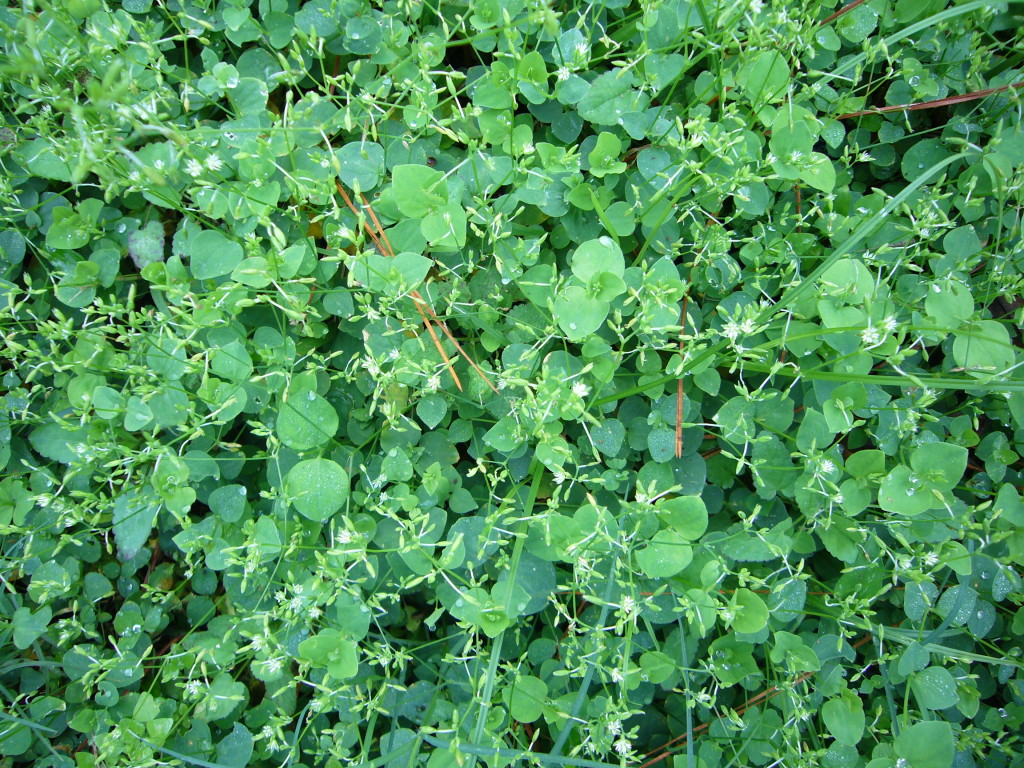
Drymaria cordata is a rather prolific weed calso called Drymaria, Dry Mary, White Snow, and West Indian Chickweed. Photo By Green Deane
Many people ask me to identify Drymaria cordata. However that is not exactly how they say it. Usually it is something like: “What is this damned weed?” “Can you tell me what this awful stuff is?” “This ugly growth is all over my yard.” Among several reasons why it might not be liked is the seeds stick to shoes, pant legs and pets.
While it grows locally all year Drymaria reproduces during the cooler months which has nothing to do with it being called “White Snow.” That name, surprisingly, is a good one. In the right lighting at the right time of year a patch of Drymaria seed spikes gives a convincing illusion of a patch of snow on the lawn. Foodwise Drymaria’s young leaves and shoots can be eaten raw. I know some folks who use it like regular chickweed, which is the related Stellaria. Drymaria leaves are also ground and boiled. The filtered water is used medicinally. Research shows it has some antibacterial qualities. To learn more about “Dry Mary” go here.
This is a reminder now is the time to look for Silverthorn fruit if you live where the winters are mild. If not you will find them later in the spring. The Silverthorn has several odd qualities among them fruiting during our winter. Another is that the fruit is not only high in Vitamin C but it has the highest percentage of lycopene of any fruit. The seed also has Omega-3 fatty acids. All around a good find. Look for them as a hedge but also as naturalized escapees from Virginia south. To read more about the Silverthorn go here.
Do we really care what it is called? There is a very small group of polypores called Ganoderma. We found some during a class this past weekend in Melbourne, Fl. Also called the Reishi Mushroom, they have long been used in Asian medicine to boost the immune system, among other applications. They are easy to identify — generally speaking — and not toxic; not edibles per se but medicinal. We have at least three species locally. One is easy to sort out because it only grows on palms, G. zonatum. Its presence also means the palm will die soon. A less common one is G. applanatum, or the “artist fungus.” You can draw on the polypore’s under side. It is fairly easy to identify because the top side is not shiny. But what the third species might be is a bit fuzzy. Many references use G. curtisii which I am happy to call it. But some experts insist that is an invalid name for a southern G. lucidum. But when you ask them if the southern one really is a G. lucidum they paddle backwards and say it’s in the “Ganoderma group.” Thanks a lot. I knew that already. Medicinally they are supposedly all used the same way, which is just like the ones from Asia. However, those who sell the Asian ones claim theirs are better. There is also little research on the North American species to counter than claim, whether true or not. But with all the wild plants we use what is more important than its name is your ability to identify it. Besides the name another irritation is the translation of Ganoderma. It is usually mistranslated from the Greek to mean “shiny skin.” The nuance, however, is more properly “polished leather.”
Botany Builder #37: Cruciate, CREW-she-it or CREW-she-ate, from the Dead Latin Crux meaning in the shape of a cross. There is one common family of plants that have cruciate blossoms and they are all edible. I’m referring to the greater mustard group. They all have blossoms that are shaped like an X or like an H. They also have six stamen, four long, two short. There are no toxic mustards and were featured in last week’s newsletter here.

January 2014
Hopefully the frigid weather is behind us. It’s suppose to be warm this weekend. Here’s my near-term foraging class schedule: Gainesville, FL: Saturday, February 8th, Boulware Springs Park, 3420 SE 15th St. 32641. 9 a.m. Ocala, FL: Sunday, February 9th, Jervey Gantt Recreation Complex, 2390 SE 36th Ave. 34471, 9 a.m. Port Charlotte, FL: Saturday, February 15th, Bayshore Live Oak Park, 23000 Bayshore Rd., 33980, 9 a.m. West Palm Beach, FL: Sunday, February 16th, Dreher Park, 1200 Southern Blvd. , 33405, 9 a.m.

Florida EarthSkills 2014
The Florida Earthskills gathering starts this Thursday at Little Orange Creek Nature Park, which is a little over a mile east of Hawthorne, Florida. I will be giving plant walks there on Friday. This is a new location so it should an interesting place to explore. EarthSkills conferences differ greatly from herbal conferences. While one can find herbalism at an EarthSkills gathering it is what the name implies, earth skills. You can learn a variety of skills and techniques from identifying edible weeds to making a bow to dying your own handmade clothes. It’s a very communal gathering that reminds me of many such free-spirited events back in the 60s. Cool! See you there.
This is a reminder the Florida Herbal Conference 2014 will be held in Deland in late February. Featured speaker will be Susan Weed. Also for the third year in a row I will be leading weed walks at the conference, a challenge in winter on dry ground. My walks are usually first thing in the morning when the air is cool and the coffee hot. Although it is the Florida Herbal Conference it draws teachers and students from all over North America. Two other Florida “locals” will be teaching classes besides the scheduled main speakers. They are Andy Firk, who holds a wide variety of workshops throughout the year at his “Bamboo Cove” in Arcadia, and Earthskills’ past host Mycol Stevens of Gainesville. Mycol’s name used to be Michael but he came to like mushrooms and other fungi so well he changed the spelling.
Though your foraging may drop off during the winter it’s a great time to study wild edibles with my nine DVD set. Each DVDs has 15 videos for 135 in all. They make a great gift. Order today. Some of these videos are of better quality than my free ones on the Internet. They are the same videos but many people like to have their own copy. I burn and compile the sets myself so if you have any issues I handle them personally. There are no middle foragers. And I’m working on adding a tenth DVD. To learn more about the DVDs or to order them click here. I also uploaded a new video to You Tube recently. This one is about Cereus fruit. It is not on the DVDs but you can see it here.
What Do You See? #1: Lastly, in the picture below there are three different, common edibles species. There a fourth lesser known and possibly five. Can you spot and name them? The answer will be published here next week or you read them now on the What Do You See? board in the Green Deane Forum.

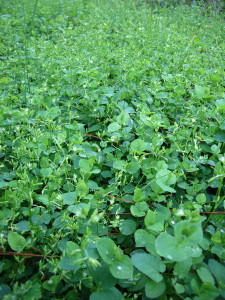
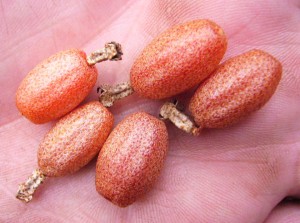
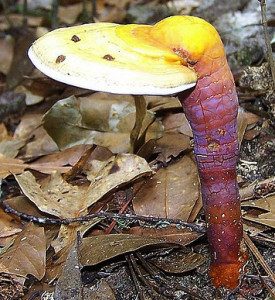
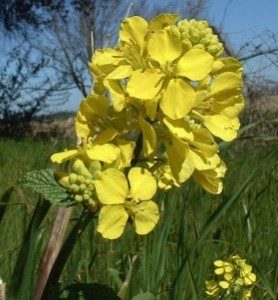
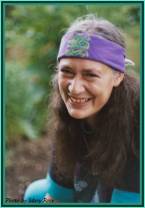

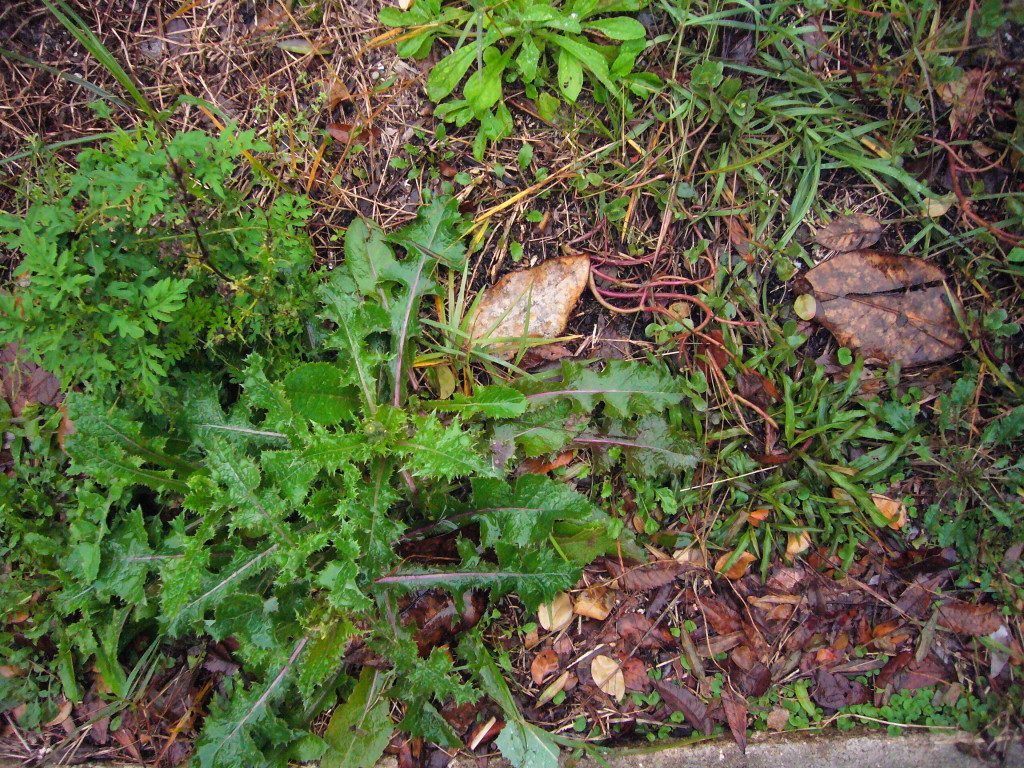

Love the ID quizz. Will help me actually build a memory that lasts!
Taylor~
Deane, could you point to any resources on using G. zonatum interchangeably with G. lucidum medicinally? I’ve not been able to find any and don’t know any herbalists with better luck.
The silverthorn here in the Atlanta area are dry and small.
Usually around this time of year they are plump and good to eat, I have not found a tasty one this year.
The cold weather must have reduced or prevented any good barrys this year.
We have to pay tribute and not to look weeds, such as Dryma cordata, down. In this respect I should like to refer to a recent study on the analgesic and antipyretic activities of Drymaria cordata (Linn) wild ( Caryophyllaceae ) extract comparing these with acetyl salicylic acid and morphine on the one hand and 2, 4 – dinitrophenol ( DNP ) – , amphetamine – and yeast – induced hyperthermia on the other hand. I have sited the exact academic journal as well as the abstract of the study in my comment in the article: “Drymaria Cordata…” . Now let me see what I may say about “What do I see?”. I can see my friends :Mustard,….and….Oh I’ve run out of ink….good student I am! How great an idea, Sir,to introduce such nice quizzes to learners like myself . A chemist on retirement, now motivated by love of Mother Nature I’ve become a student studying plants as one of Her miracles bearing in mind the religious advice to continue learning and study from the cradle to the grave. Back to the point I won’t give all names of the edibles; but as our high secondary ( Huntoob) school English master, Mr. Hall, used to comment on marking our “précis” exercise by writing under the mark “Not too bad”;so I scorred “not too bad” in this quiz. He was one of the best teachers. He became chief inspector of English language in the Sudanese Ministry of Education ; then left back home after a friendly stay for more than seven years after independence in 1956. Once you have mentioned that images alone won’t tell about the correct identity of a plant ; but together with experience and learning more clarification is reached. However, let us also not to forget the complexity added by what you’ve noticed about that “great pattern – finder , our mind” as exemplified by the case between Drymaria cordata and Chikweed (Stellar).